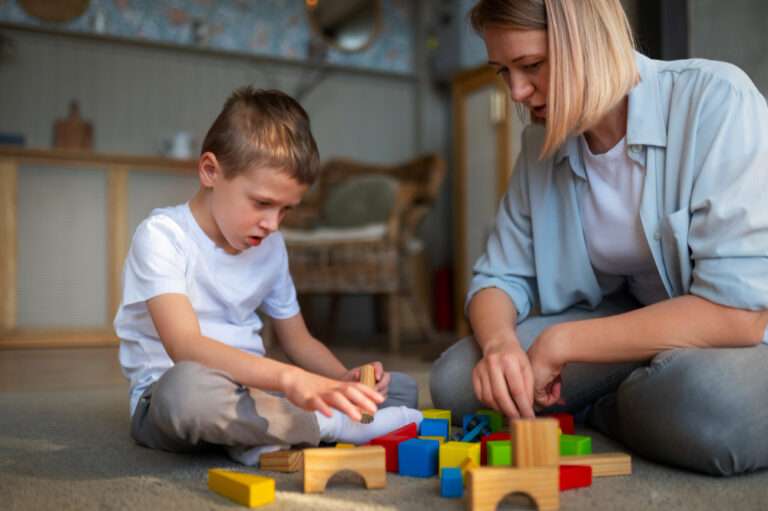Best practices for dealing with children that have autism
Dealing with children who have autism requires understanding, patience, and the use of specific strategies tailored to meet their unique needs. Autism Spectrum Disorder (ASD) is a developmental disorder that affects communication, behavior, and social interaction. Each child with autism is different, so what works for one child may not work for another. However, certain best practices can help caregivers, educators, and therapists create a supportive and effective environment for children with autism.
Understanding Autism
Before diving into best practices, it is essential to understand the core characteristics of autism. Children with autism may experience difficulties with social interactions, communication (both verbal and non-verbal), and may exhibit repetitive behaviors or intense interests in specific topics. Sensory sensitivities are also common, where children may be overly sensitive or under-sensitive to sounds, lights, textures, or other sensory inputs.
Building a Supportive Environment
- Structured Environment: Consistency and structure are crucial for children with autism. They thrive in environments where routines are predictable. Establishing a clear schedule for daily activities can reduce anxiety and help them understand what to expect next. Visual schedules using pictures or symbols can be particularly helpful.
- Safe Space: Create a safe, quiet space where the child can retreat when feeling overwhelmed. This space should be calming and free from sensory triggers that might cause distress.
Effective Communication
- Simple and Clear Instructions: Use clear, concise language when giving instructions. Avoid using idioms or figurative speech, as children with autism may interpret language literally. Break down tasks into smaller, manageable steps.
- Non-Verbal Communication: Pay attention to non-verbal cues such as body language, facial expressions, and gestures. Children with autism might communicate more effectively through these means. Visual aids, picture cards, and sign language can also support communication.
- Encourage Expression: Provide opportunities for children to express themselves in ways they find comfortable. This might include art, music, or using technology such as tablets with communication apps.
Social Interaction
- Social Skills Training: Children with autism often need explicit instruction in social skills. Role-playing, social stories, and video modeling can teach appropriate social behaviors, such as taking turns, making eye contact, and understanding social cues.
- Peer Interaction: Encourage interaction with peers in a structured and supportive setting. Pairing children with understanding and patient peers can foster positive social experiences.
Behavioral Strategies
- Positive Reinforcement: Reinforce desired behaviors with positive feedback. Use rewards that are meaningful to the child, whether it’s verbal praise, stickers, or extra playtime. Consistent positive reinforcement can encourage the repetition of good behavior.
- Behavioral Interventions: Applied Behavior Analysis (ABA) is a widely used technique for addressing behavioral issues. ABA involves observing the child’s behavior, understanding the triggers, and systematically applying strategies to modify the behavior.
- Consistency: Ensure consistency in behavioral strategies across all environments (home, school, therapy). Consistent responses to behavior help children understand expectations and consequences.
Sensory Considerations
- Sensory Needs: Identify the child’s sensory sensitivities and adapt the environment accordingly. Provide sensory breaks throughout the day, allowing the child to engage in activities that help them regulate their sensory input. This could include quiet time, physical activity, or sensory toys.
- Calm Environment: Reduce sensory overload by minimizing background noise, harsh lighting, and clutter. Use calming colors and maintain an orderly space.
Educational Strategies
- Individualized Education Plan (IEP): Work with educators to develop an IEP tailored to the child’s specific needs. This plan should include accommodations, modifications, and specific goals for academic and social development.
- Differentiated Instruction: Adapt teaching methods to the child’s learning style. Some children with autism are visual learners, while others might benefit from hands-on activities or auditory instruction. Be flexible and open to trying different approaches.
- Assistive Technology: Utilize technology to support learning. Tablets, communication devices, and specialized software can enhance the educational experience and provide alternative ways for the child to engage with the material.
Collaboration and Support
- Family Involvement: Engage with the child’s family to ensure consistency and support across different environments. Regular communication between caregivers, teachers, and therapists is vital for sharing insights and strategies.
- Professional Support: Collaborate with professionals such as speech therapists, occupational therapists, and psychologists. These experts can provide specialized support and interventions tailored to the child’s needs.
- Training and Education: Ensure that all individuals involved in the child’s care are educated about autism and trained in effective strategies. Ongoing professional development can help caregivers and educators stay informed about the latest research and best practices.
Emotional and Psychological Support
- Emotional Regulation: Teach children techniques to manage their emotions. This might include deep breathing exercises, using a calming jar, or engaging in activities that the child finds soothing.
- Positive Relationships: Build a trusting relationship with the child. Show empathy, patience, and understanding. A positive and supportive relationship can significantly impact the child’s development and well-being.
- Celebrate Successes: Acknowledge and celebrate the child’s achievements, no matter how small. Positive reinforcement and encouragement can boost the child’s self-esteem and motivation.
Conclusion
Dealing with children who have autism requires a multifaceted approach that addresses their unique needs and strengths. By creating a structured, supportive environment, using clear and effective communication, and employing individualized educational and behavioral strategies, caregivers and educators can help children with autism thrive. Collaboration with families and professionals, along with a commitment to ongoing learning and adaptation, is essential for providing the best possible care and support for children with autism. Through understanding, patience, and dedicated effort, we can make a positive difference in the lives of these children and help them reach their full potential.
------------From our Sponsors------------









